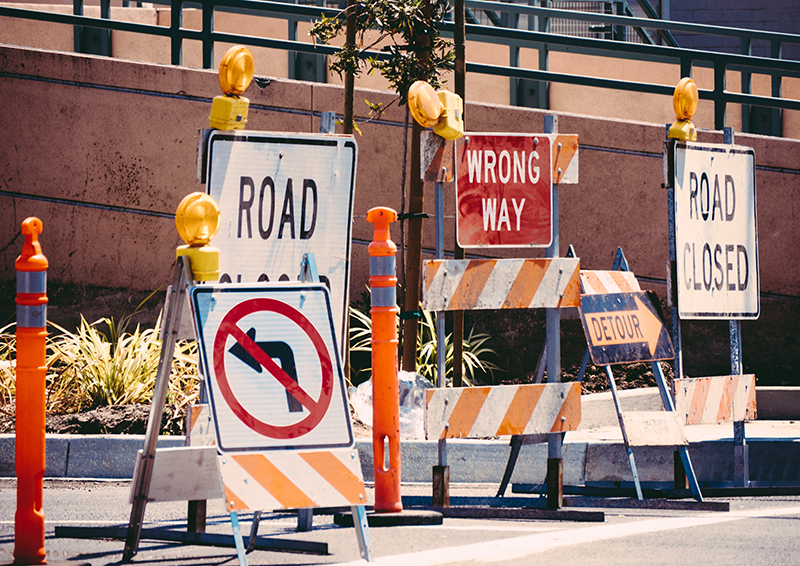Road work can be dangerous for workers, who are completing their jobs close to fast-moving cars. Plus, it’s not usually feasible to close the roads entirely to complete the task. In 2015, accidents in road construction zones had resulted in more than 25,000 injuries and over 600 fatalities. New technologies are working to make these construction zones safer for everyone involved. How are smart work zones improving roadwork safety?

Communication between road workers has always been paramount. Smart devices have only made that communication more accessible, and are being incorporated into work zones to make it more efficient. These new smart work zones have been equipped with a variety of different mobile tools that collect and transmit data in real time — everything from the need to change a traffic sign to the approach of a piece of heavy equipment.
In addition to increasing safety, these new tools can help job sites run more efficiently, decreasing the time spent on each task and resulting in overall lower costs. It also allows job sites — made up of the different companies working along the same stretch of highway, for example — to coordinate their efforts and their information seamlessly.
It is also being used to update digital road signs automatically. We’ve come a long way from the first road signs that were used in Rome in 312 B.C., and with more than 164,000 miles of highway in the United States alone, new signs were needed. New digital road signs can be updated remotely with information about lane closures, traffic backups or anything else that must be conveyed to drivers as they approach the work site.
Everyone is talking about the Internet of Things (IoT). It is a broad term for devices that are connected to one another, allowing them to share information. Everything from virtual assistants like Alexa or Siri, to smart appliances and smartphones, are included in the Internet of Things.
Incorporating the Internet of Things in road work sites can improve on a program that’s been in place since the 1960s — the Intelligent Transportation Systems, or ITS. This program was designed to improve transportation efficiency, collecting information on things like vehicle speed and videotaping work zones to make more informed decisions about closing lanes or shifting traffic.
IoT and ITS work hand in hand to improve work zone safety. The inclusion of new technology makes the process more efficient, leading to safer work zones and fewer road worker injuries.
Roadwork zones are synonymous with bright oranges and yellows. These colors are designed to make the workers and their equipment more visible to passing motorists. A growing trend is to utilize microprismatic plastics in place of the traditional materials used for these high visibility materials. These are the same materials you might see in a bicycle or motorcycle reflector, designed to catch and reflect as much light as possible, regardless of the ambient light conditions. These microprismatics are what is known as “retroreflective” — they shine brighter than the light source they are borrowing from.
This is especially important for work zones that will be active at night when driver visibility is at its lowest. A vest that lined with microprismatic plastics would be easier to see for an approaching driver because it would catch and reflect the light from the vehicle headlights more efficiently.

All of the safety measures in the world won’t make a difference if the workers are not instructed on proper safety procedures. This can prove difficult for supervisors hiring new workers because of a shortage, dropping them on the jobsite and expecting them to learn on the job.
One emerging trend is utilizing online training for workers to ensure they are appraised and understand all necessary safety regulations. Many of these courses are available for free through the Department of Transportation’s website. Training should also include hands-on lessons on reading plans, setting up work sites, and run them efficiently and safely.
Smart work zones aren’t just going to reduce costs and make worksites more efficient. When used properly, they have the potential to minimize worksite accidents dramatically.
 Megan Ray Nichols
Megan Ray Nichols
Freelance Science Writer
Megan Ray Nichols is a STEM writer and the editor of Schooled By Science. She regularly writes for IMPO Magazine and American Machinist. For more from Megan, follow her on Twitter, @nicholsrmegan, or subscribe to her blog.
In this episode, I sat down with Beejan Giga, Director | Partner and Caleb Emerson, Senior Results Manager at Carpedia International. We discussed the insights behind their recent Industry Today article, “Thinking Three Moves Ahead” and together we explored how manufacturers can plan more strategically, align with their suppliers, and build the operational discipline needed to support intentional, sustainable growth. It was a conversation packed with practical perspectives on navigating a fast-changing industry landscape.